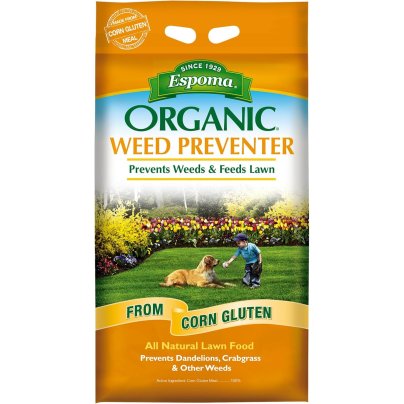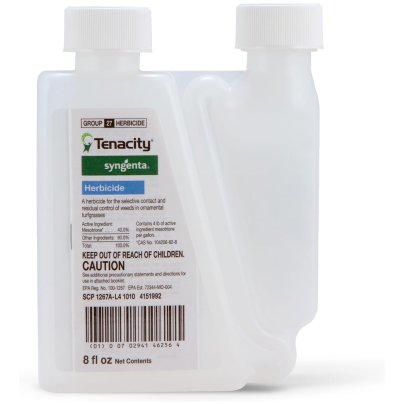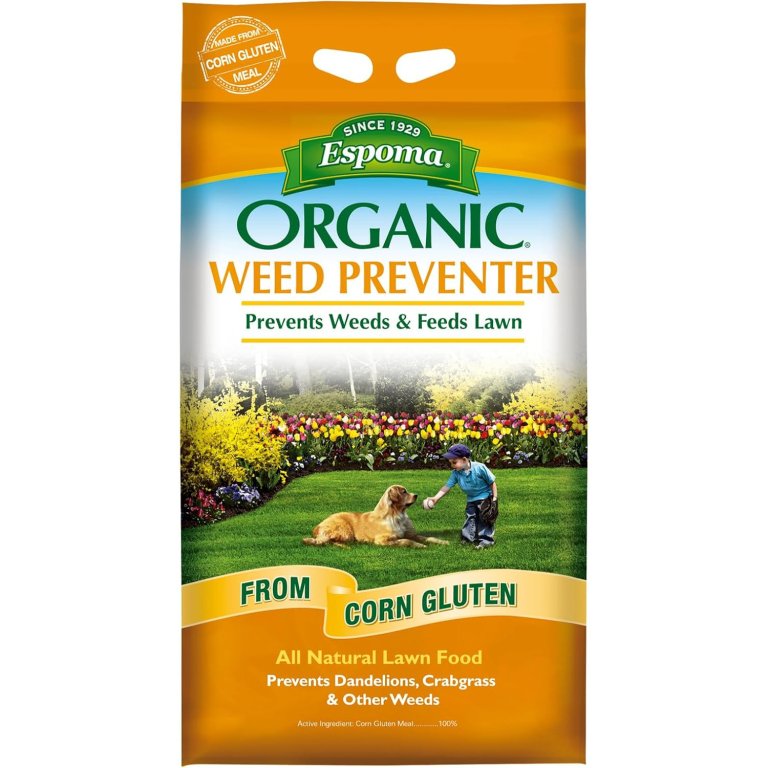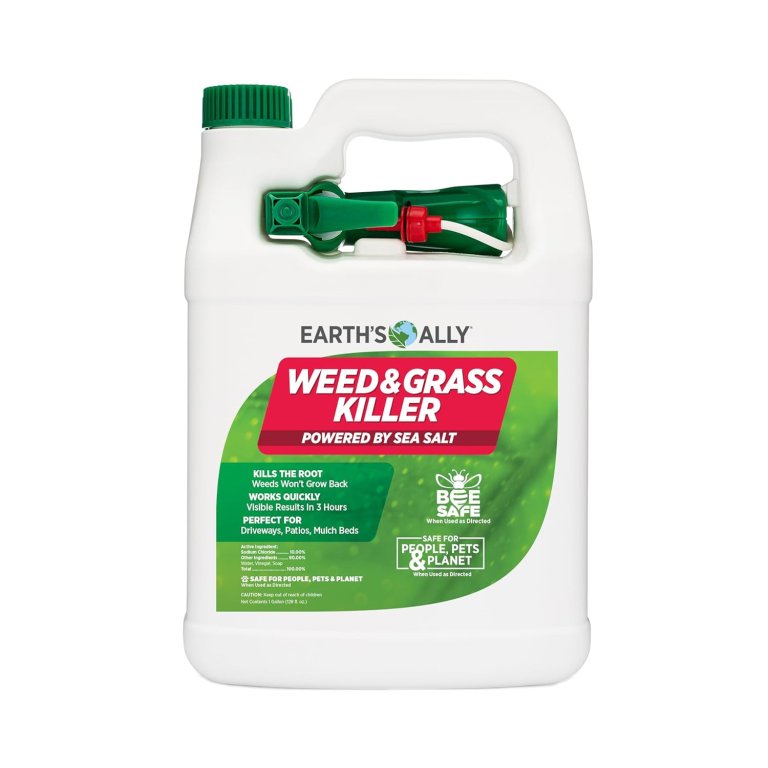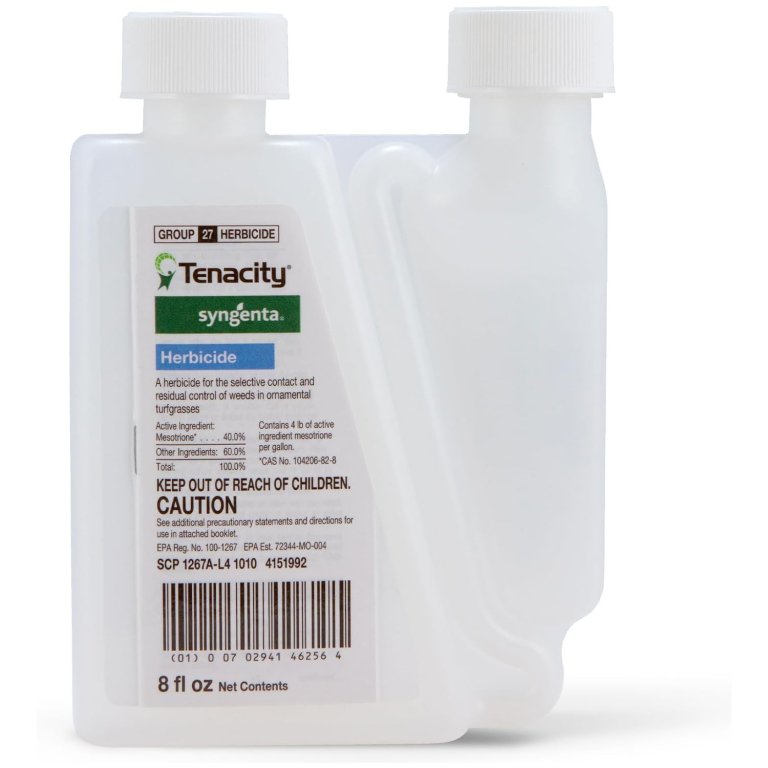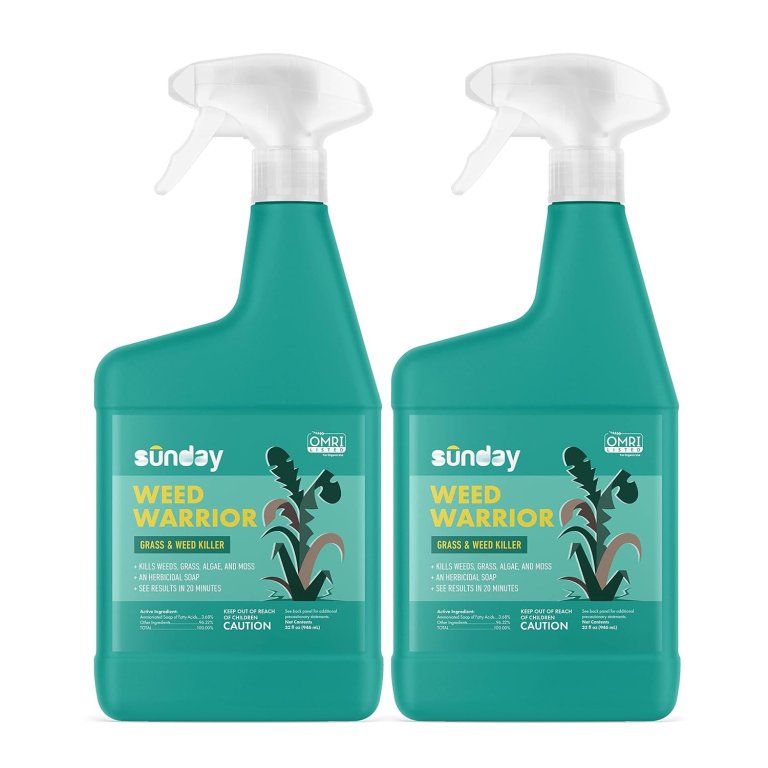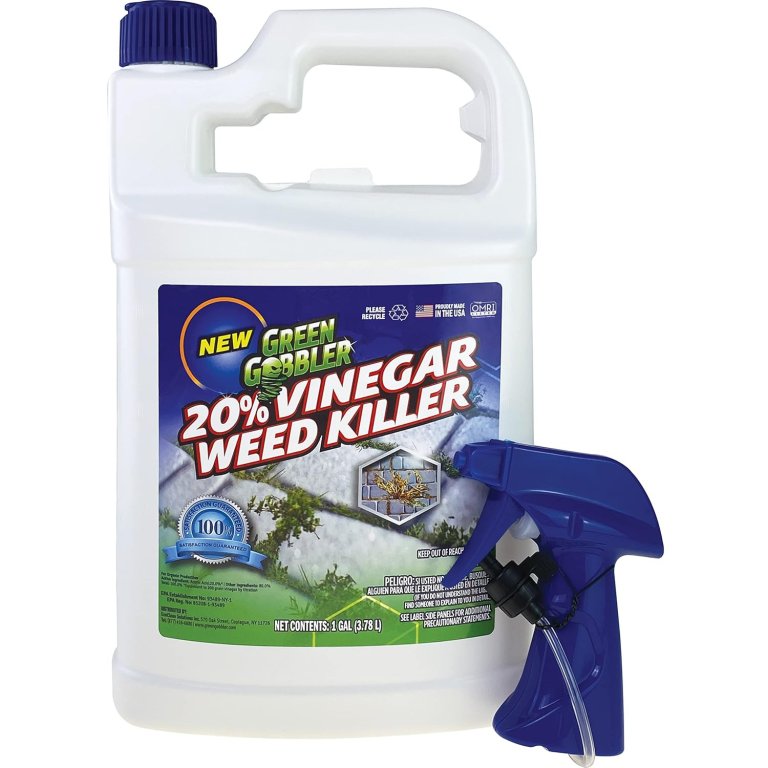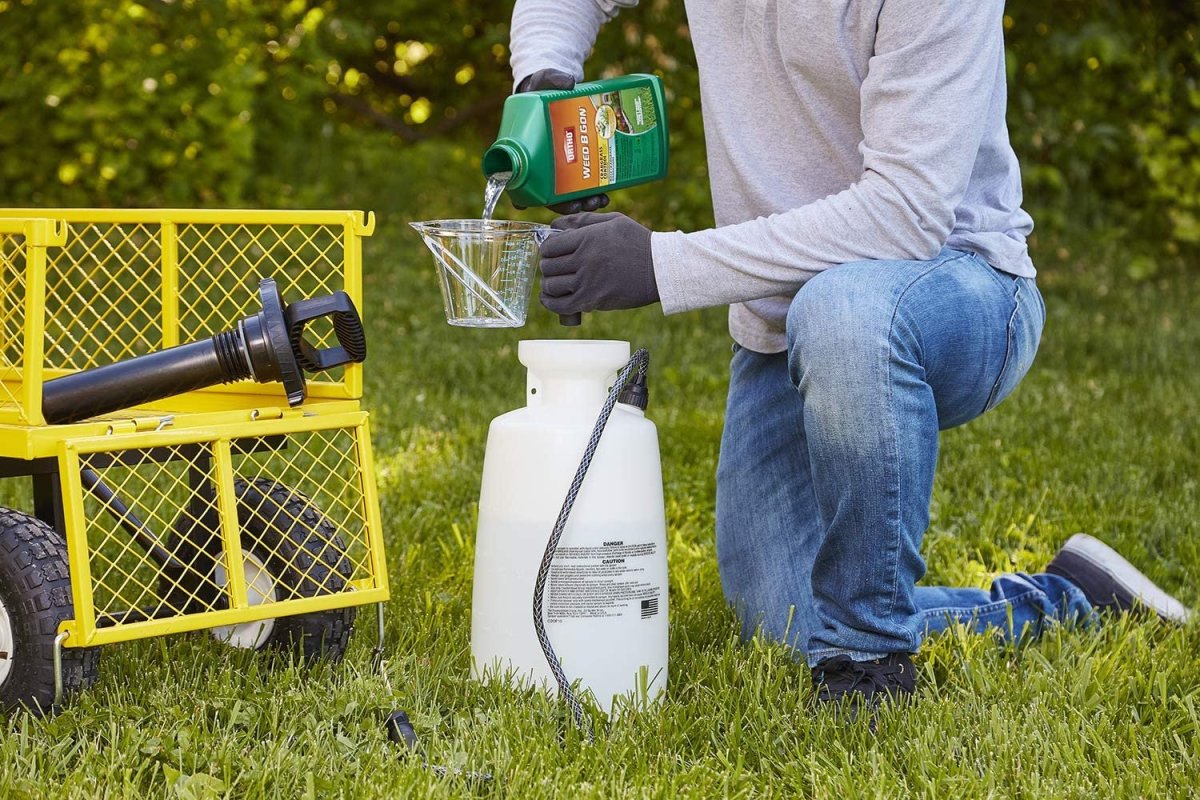
We may earn revenue from the products available on this page and participate in affiliate programs. Learn More ›
Crabgrass killers can help control one of the most stubborn lawn weeds, making them essential for anyone wanting a healthy, lush yard. Since crabgrass spreads quickly, thrives in spots already thin or bare, and produces thousands of seeds each season, choosing the right crabgrass killer can prevent a small problem from becoming a major issue.
But finding a quality crabgrass killer that doesn’t harm beneficial plants and animals or persist in soil long term isn’t easy. After researching dozens of conventional and organic weed killers, we selected the Espoma Organic Weed Preventer Plus Lawn Food as our top pick because its formula stops crabgrass seeds from germinating while also providing lawn care nutrients that help your grass grow thicker and stronger.
Whether you’re looking to stop a small patch or treat a full-on lawn takeover, our recommendations and selection tips can help you choose one of the best crabgrass killers for your yard. to navigating the available options and our top recommendations for the best crabgrass killers.
- BEST OVERALL: Espoma Organic Weed Preventer Plus Lawn Food
↓ Jump to Review - BEST BANG FOR THE BUCK: Earth’s Ally Ready-To-Use Weed & Grass Killer
↓ Jump to Review - BEST PRE-EMERGENT: Syngenta Tenacity Herbicide
↓ Jump to Review - BEST POST-EMERGENT: Sunday Weed Warrior
↓ Jump to Review - BEST FOR NON-LAWN AREAS: Green Gobbler 20% Vinegar Weed & Grass Killer
↓ Jump to Review

Before You Buy a Crabgrass Killer
Crabgrass is especially difficult to control because ungerminated seeds can live in soil for up to 30 years before sprouting. The weed germinates when ground temperatures reach 55 to 65 degrees Fahrenheit (the average temperature during spring and fall in most areas), and a single plant can produce 150,000 seeds during the growing season.
Conventional crabgrass killers often contain harsh chemical herbicides like glyphosate and atrazine, which can persist in soil and water and harm wildlife and beneficial plants. For a more environmentally conscious approach to getting rid of crabgrass, look for products that contain one or more of the following ingredients:
- Corn gluten meal: Prevents germination without harming established grass
- Sodium chloride: Disrupts water balance to dehydrate plants but can accumulate in soil
- Acetic acid: Burns any plant it contacts by breaking down its cell walls
- Ammoniated soap of fatty acids: Kills weeds quickly by disrupting their cell membranes
- Mesotrione: Impairs photosynthesis, leading to eventual weed death
Maintaining a healthy, dense lawn is one of the best natural defenses against crabgrass, since it reduces the thin and bare spots the weed favors. While manual removal using a weeding tool can also be effective, combining preventive care with targeted treatments is often necessary for long-term control.
Crabgrass Killers Comparison
| Product | Type | Active Ingredient | Selective vs. Nonselective |
|---|---|---|---|
| Espoma Organic Weed Preventer Plus Lawn Food | Pre-emergent | Corn gluten | Selective |
| Earth’s Ally Ready-To-Use Weed & Grass Killer | Post-emergent | Sodium chloride | Nonselective |
| Syngenta Tenacity Herbicide | Pre- and post-emergent | Mesotrione | Selective |
| Sunday Weed Warrior | Post-emergent | Ammoniated soap of fatty acids | Nonselective |
| Green Gobbler 20% Vinegar Weed & Grass Killer | Post-emergent | Acetic acid | Nonselective |
Our Top Picks
Crabgrass gets its name from how it grows—low to the ground with stems that radiate out from the center in a clump, resembling crab legs. While crabgrass growth is a relatively common lawn problem, it’s not especially easy to treat. One of the following products can help.
Best Overall
Photo: AmazonWhat We Like
- Fertilizes while preventing weeds
- Granules are easy to apply
- Non-toxic formula is safe for kids and pets
What We Don’t Like
- Application timing is essential
- Not meant for established crabgrass
Product Specs
- Type: Pre-emergent
- Active ingredient: Corn gluten
- Selective vs Nonselective: Selective
Espoma’s Organic Weed Preventer Plus Lawn Food is an environmentally friendly solution for controlling crabgrass while nourishing your lawn. This dual-purpose formula combines pre-emergent herbicide action with organic nutrients to stop crabgrass seeds from germinating and support thick, healthy lawn growth, no matter the grass type.
For best results, Espoma recommends applying 20 pounds of this granular crabgrass killer per 1,000 square feet as a weed preventer or 10 pounds per 1,000 square feet as a fertilizer. The corn gluten formula creates a protective barrier in soil that blocks crabgrass from taking root, providing long-lasting control when applied in early spring and early fall. As a selective crabgrass killer for lawns, it directly targets unwanted weeds—however, since it’s also pre-emergent, it won’t eliminate anything already established. When applied as directed, this organic weed killer delivers reliable weed prevention that’s safe for kids, pets, and the environment.
What our tester says: “We really appreciated not having to worry about our kids or pets walking on the lawn after treatment. Plus, we love that we can use Espoma in our veggie garden and flower beds.”—Stacey L. Nash, Product Reviews tester and writer
Get the Espoma crabgrass killer at Amazon, Ace Hardware, or Walmart.
Best Bang for the Buck
Photo: AmazonWhat We Don’t Like
- Budget-friendly gallon jug comes with convenient trigger sprayer
- Broad-spectrum weed control for crabgrass and more
- Easy to apply and no mixing needed
- People- and pet-safe weed killer
What We Like
- Nonselective formula kills grass if contacted
- Accumulated salt can impact health of desirable plants
Product Specs
- Type: Post-emergent
- Active ingredient: Sodium chloride
- Selective vs Nonselective: Nonselective
This salt-based weed and crabgrass killer from Earth’s Ally is a powerful and convenient solution for battling crabgrass and a variety of other tough weeds. The fast-acting herbicide uses a nonselective formula that kills unwanted plants on contact by disrupting their cell membranes to prevent them from taking up water. The ready-to-use spray bottle allows for targeted application, making it easy to treat problem areas.
In addition to crabgrass, Earth’s Ally controls many other common weeds, including dandelions, clover, and chickweed. Like all nonselective formulas, however, it will also kill any other grass or plant life it contacts, so precision is key. Overall, this budget-friendly pick is a solid choice for spot-treating crabgrass without worrying about harming people or the planet. Just be careful not to overapply, since salt can accumulate in soil and affect long-term lawn health.
Get the Earth’s Ally crabgrass killer at Amazon, Lowe’s, or The Home Depot.
Best Pre-Emergent
Photo: AmazonWhat We Like
- Provides both pre- and post-emergent control
- Concentrated for multiple uses
- Kills weeds down to the roots
What We Don’t Like
- Not safe for all types of grass
- Requires dilution prior to application
Product Specs
- Type: Pre- and post-emergent
- Active ingredient: Mesotrione
- Selective vs Nonselective: Selective
Though it’s one of the pricier products on our list, Syngenta’s Tenacity herbicide is one of the best crabgrass killers on the market. Offering both pre- and post-emergent control, it’s a highly effective choice for managing crabgrass and a wide variety of other stubborn lawn weeds. Its active ingredient, mesotrione, mimics a naturally occurring compound in the bottlebrush plant that blocks photosynthesis and causes weeds to die.
Tenacity provides comprehensive protection by preventing crabgrass seeds from germinating while targeting existing broadleaf weeds like dandelions, clover, and ground ivy. The crabgrass killer concentrate provides multiple treatments, and since it’s selective, it’s safe for many types of turf grass, including Kentucky Bluegrass, centipede, Buffalo grass, fescue, and more. This dual-action herbicide is also one of the few that’s safe to apply when overseeding your lawn or applying grass seed to bare soil.
Get the Syngenta crabgrass killer at Amazon or Walmart.
Best Post-Emergent
Photo: AmazonWhat We Like
- Quickly controls crabgrass and a variety of broadleaf weeds
- Safe for kids, pets, and the environment
- User-friendly spray application
What We Don’t Like
- Not for newly seeded lawns
- Requires multiple treatments
Product Specs
- Type: Post-emergent
- Active ingredient: Ammoniated soap of fatty acids
- Selective vs Nonselective: Nonselective
Sunday Weed Warrior is an eco-friendly, post-emergent solution that targets crabgrass and other tough weeds without the use of harmful chemicals. Its active ingredient, ammoniated soap of fatty acids, works by disrupting cell membranes to cause rapid die-off. Along with its convenient spray bottle design, this makes it highly effective for spot treating weeds without harming established lawns.
Weed Warrior’s non-toxic formula is safe for kids and pets while still being effective enough to show results within hours. As a nonselective herbicide, it’s highly effective for precise treatment of visible weeds, though you’ll want to be careful not to spray desirable plants. While particularly stubborn infestations may require more than one application, this crabgrass killer herbicide breaks down quickly in the soil, making it a safer choice for the environment.
Get the Sunday crabgrass killer (various sizes) at Amazon, The Home Depot, Walmart, or Sunday.
Best For Non-Lawn Areas
Photo: AmazonWhat We Like
- Ideal for driveways, walkways, and non-lawn areas
- Powerful vinegar-based formula
- Kills a range of weeds and grasses quickly
What We Don’t Like
- Kills any plant it comes in contact with
- Not safe for use on grass
Product Specs
- Type: Pre-emergent
- Active ingredient: Acetic acid
- Selective vs Nonselective: Nonselective
Green Gobbler weed and grass killer is a highly effective, fast-acting herbicide ideal for non-lawn areas like driveways, sidewalks, and gravel patches. The powerful 20 percent acetic acid formula quickly burns and kills a wide range of broadleaf weeds and tough grasses, including crabgrass, dandelions, clover, and moss. It comes in a ready-to-use spray application for precise spot treatment of hardscape areas.
Because it’s nonselective, Green Gobbler will kill any vegetation it contacts, so it should not be used on lawns or near desirable plants. For best results, apply this pick on a calm, sunny day and avoid allowing it to run off to nearby soil. While you’ll want to wear gloves and eye protection during application, the pet-safe crabgrass killer is non-toxic and also safe for kids and the environment when used as directed.
What our tester says: “We’ve used several vinegar-based weed killers and found that Green Gobbler works well in eradicating young weeds. Just be careful not to get it on desired flowers, shrubs, or grass, as it can damage or kill them.”—Debbie Wolfe, Product Reviews tester and writer
Get the Green Gobbler crabgrass killer at Amazon or The Home Depot.
Jump to Our Top Picks
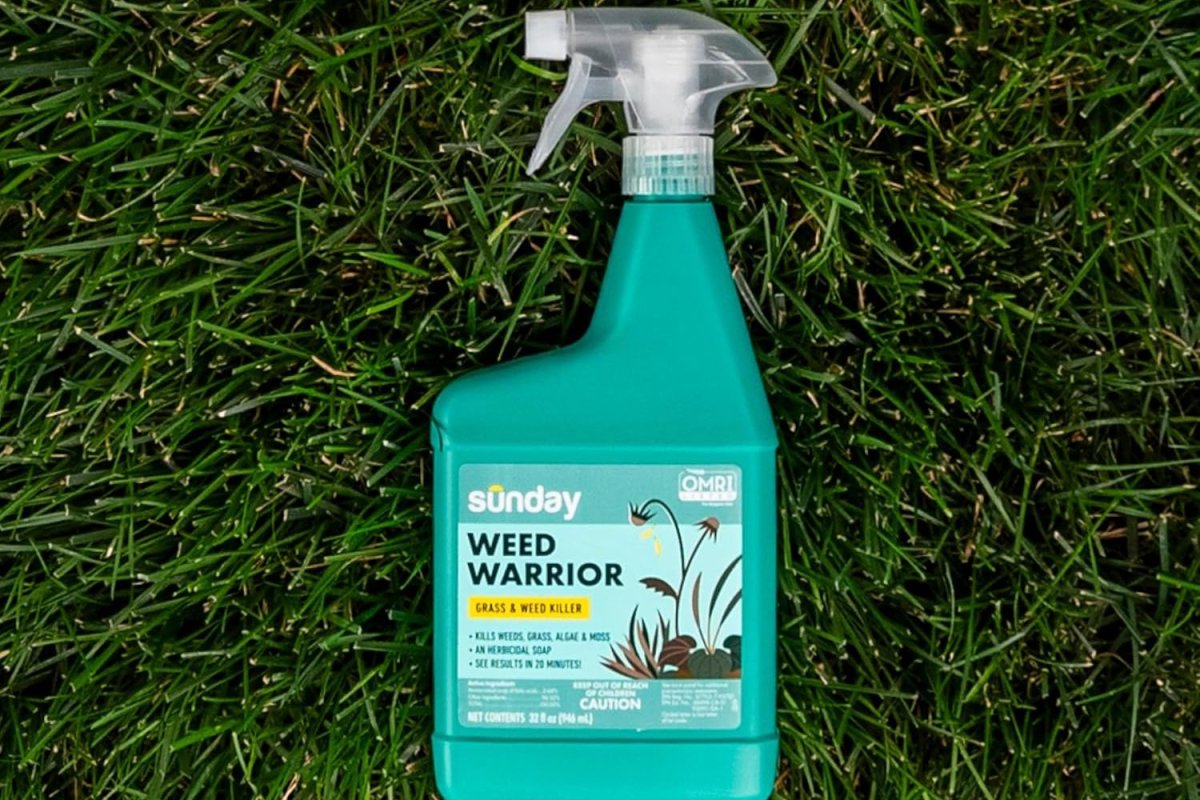
How We Chose the Best Crabgrass Killers
To identify our picks for the best weed killers for crabgrass, we focused on products that are both safe and effective for those looking to maintain a healthy lawn and environment. We considered both granular and liquid formulas that are easy to apply and capable of tackling crabgrass and other common weeds. We evaluated each product’s compatibility with warm- and cool-season grasses and included both selective and nonselective products to meet different needs. Our final list features pre- and post-emergent products as well as formulas that also act as fertilizer to support turf health.
While plenty of other effective crabgrass killers are available that didn’t make our list, most contain chemicals like 2,4-D, dicamba, and quinclorac, which can contaminate soil and water and pose health risks to people, animals, and the environment. We chose to prioritize more natural crabgrass killer alternatives that balance effectiveness with environmental and household safety. You can also make your own weed killer at home using ingredients like vinegar, salt, and soap.
What to Consider When Choosing a Crabgrass Killer
Selecting the best crabgrass killer for your lawn depends on several factors. Do you want a specialized product that targets crabgrass before it sprouts or a weed and feed that controls existing weeds while nourishing your yard? Are you looking to treat an established lawn or prevent unwanted vegetation from cropping up in a plot of new grass? Once you’ve answered these questions, you’ll be well on your way to finding the right crabgrass killer for your needs.
Types of Crabgrass Killers
There are two types of crabgrass killers: pre- and post-emergent. A pre-emergent crabgrass killer will prevent seeds from germinating, and a post-emergent crabgrass killer will eliminate established plants. The best choice for dealing with your specific lawn weeds depends on the current condition of your grass and when you plan to treat it.
Pre-emergent Herbicides
Pre-emergent herbicides, or weed preventers, stop weed seeds from germinating. When applied correctly, they control annual weeds that grow from seed each year and die at the end of the season. Pre-emergents do not kill existing weeds.
The timing of the pre-emergent application is critical. You need to apply the herbicide just before weed seeds are ready to germinate. Applying too early can cause the product to dissipate before seeds germinate, while applying too late—after seeds have sprouted—will fail to control the weeds. In areas with long growing seasons, crabgrass can germinate over an extended period, so multiple applications may be necessary to maintain a weed-free lawn.
Post-emergent Herbicides
Post-emergent herbicides kill weeds that have already emerged. They work best on tough-to-kill weeds like crabgrass and quackgrass if applied when the weeds are young and tender. Mature weeds might require multiple applications, which can stress the lawn or other plants in the area.
For weedy yards, combining pre- and post-emergent herbicides is often the most effective strategy. Pre-emergents prevent new seeds from sprouting, while post-emergents eliminate existing weeds. Depending on the season, weather, weed maturity, and lawn conditions, you may need multiple applications for complete control.
Selective vs. Nonselective
Herbicides are either selective or nonselective. Selective herbicides target specific weed types, such as grass weeds or broadleaf weeds, while leaving nontarget plants like lawn grass unharmed. This means they kill weeds like dandelions and crabgrass without damaging your turf. Still, it’s important to read the label carefully: A product marketed as a “grassy weed killer” may or may not control crabgrass, and it may or may not be safe for the area you plan to treat or the environment.
Nonselective herbicides kill all plants they contact, making them ideal for areas where you don’t want vegetation, such as mulched tree rings or driveway cracks. They can also be helpful for preparing for a landscape renovation, like laying new sod or creating a new flower bed.
Application Method
Herbicides are available as either liquid sprays or dry granules. Granules are easy to apply evenly with a properly calibrated lawn spreader, and any leftover product can be stored in a cool, dry location until the next use.
Liquid sprays come in concentrated or ready-to-use formulas for broadcasting over large areas or spot treating small areas. When spraying liquids, be cautious about wind speed and direction to avoid drift that could kill grass or damage other plants. Plan your application route to prevent walking through recently treated areas and spreading the weed killer unintentionally.
Warm vs. Cold Climate
The effectiveness of herbicides depends on their type, the weed’s growth stage, and the soil’s temperature. Pre-emergent herbicides work best before seeds germinate, preventing weeds like crabgrass from sprouting. Crabgrass seeds begin to germinate in spring when soil temperatures reach about 55 degrees Fahrenheit, making this the ideal time to apply a pre-emergent.
Post-emergent herbicides are most effective at killing crabgrass after the weed has emerged and is actively growing. Young seedlings are especially vulnerable to post-emergents, but mature plants may require multiple applications. In colder climates, a single early-spring pre-emergent application may be enough to control crabgrass. In warmer regions, repeated pre-emergent applications combined with targeted post-emergent treatments are often needed for full control.
FAQs
If you still have a few questions about controlling crabgrass, the following answers may help.
Apply crabgrass pre-emergent when the soil temperature is between 55 and 65 degrees Fahrenheit. If your area has a long growing season, you may need to apply a second round in the fall or according to the manufacturer’s directions.
Not necessarily. While rain generally activates pre-emergent by carrying it into the soil, particularly heavy rain immediately following application can reduce its effectiveness. In this instance, check the product instructions, as some pre-emergents can be reapplied to ensure full protection.
For pre-emergent herbicides, apply to the entire lawn when soil temperatures reach 55 to 65 degrees Fahrenheit, then water in using a garden hose to activate and prevent seeds from germinating. For post-emergent crabgrass killers, apply in the morning on a dry day, targeting only affected areas and coating crabgrass evenly.
While pre-emergent herbicides prevent crabgrass seeds from germinating, they won’t kill existing crabgrass. To control established crabgrass, you’ll need to use a post-emergent herbicide or remove the weeds manually.
Crabgrass is an annual weed. It germinates in the spring, grows throughout the summer, and dies off with the first frost in the fall. Although it completes its life cycle within one growing season, it produces a large number of seeds that can lead to recurring infestations.
